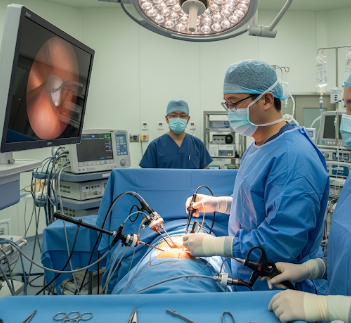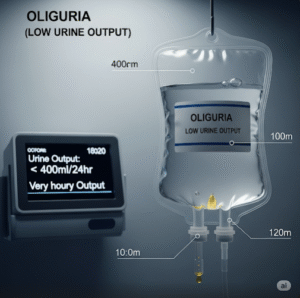Overview
Cholecystectomy is a surgical procedure performed to remove the gallbladder, a small organ located under the liver that stores bile. This surgery is typically indicated for gallstones, gallbladder inflammation (cholecystitis), gallbladder polyps, or biliary dyskinesia.
In South Korea, cholecystectomy is performed using advanced laparoscopic techniques, offering minimally invasive surgery, faster recovery, and reduced postoperative complications. Korean hospitals provide comprehensive preoperative assessment and post-surgical care, making it a top choice for both local and international patients.
What is Cholecystectomy?
Cholecystectomy involves removing the gallbladder to prevent recurrent gallstone attacks or inflammation.
Types of cholecystectomy include:
- Laparoscopic cholecystectomy: The most common method; involves 3–4 small incisions and a camera-guided technique.
- Open cholecystectomy: Performed through a larger incision in the abdomen; usually reserved for complicated cases.
- Single-incision laparoscopic cholecystectomy: Minimally invasive option using a single small incision for cosmetic purposes.
The procedure ensures relief from gallbladder-related pain, prevention of complications, and improved digestive function.
What are the Benefits?
Cholecystectomy provides multiple health and quality-of-life benefits:
✔ Relief from recurrent gallbladder pain and inflammation.
✔ Prevention of gallbladder-related complications, including infection, bile duct obstruction, or pancreatitis.
✔ Minimally invasive surgery with smaller scars and faster recovery.
✔ Rapid return to normal diet and daily activities.
✔ High success rates in South Korea with advanced laparoscopic technology.
Procedure Details
1) How should I prepare for Cholecystectomy?
- Medical evaluation: Blood tests, ultrasound, CT scan, and ECG if necessary.
- Medication review: Blood thinners or certain medications may need to be paused.
- Fasting: Usually 6–8 hours before surgery.
- Preoperative counseling: Discuss anesthesia type, surgical approach, and potential complications.
- Arrange post-operative support for transportation and initial recovery.
South Korean hospitals provide digital preoperative instructions and patient consultations, ensuring safe and effective surgery.
2) What happens during the procedure Cholecystectomy?
- Surgery is performed under general anesthesia.
- Laparoscopic approach: Small incisions are made in the abdomen, and a camera and surgical instruments are inserted.
- The gallbladder is carefully dissected from the liver and bile ducts and removed.
- Incisions are closed with sutures or surgical glue, and bandages are applied.
- Open surgery is performed in complicated cases with larger incisions.
Laparoscopic surgery typically takes 30–60 minutes, while open surgery may take longer.
3) What happens after a Cholecystectomy?
- Patients are monitored in the hospital for a few hours to 1–2 days, depending on the procedure type.
- Pain is managed with medication, and patients are encouraged to walk shortly after surgery to reduce complications.
- Mild bloating or shoulder discomfort may occur due to laparoscopic gas.
- Most patients resume normal activities within 1 week after laparoscopic surgery and 4–6 weeks after open surgery.
- Dietary adjustments may be recommended temporarily to ease digestion.
Korean hospitals provide post-operative care, dietary guidance, and follow-up consultations to ensure smooth recovery.
Risks / Benefits
Potential Risks:
- ➤ Infection at the incision site or inside the abdomen
- ➤ Bleeding
- ➤ Injury to bile ducts or surrounding organs (rare)
- ➤ Blood clots or anesthesia-related complications
- ➤ Digestive changes post-surgery (temporary diarrhea or bloating)
Major Benefits:
- ✔ Effective relief from gallbladder pain and inflammation
- ✔ Prevention of gallstone-related complications
- ✔ Minimally invasive techniques with faster recovery and smaller scars
- ✔ Safe procedure with high success rates in South Korean hospitals
Recovery and Outlook
- Immediate recovery: Pain management, monitoring vitals, and early mobilization.
- First week: Gradual resumption of daily activities; avoid heavy lifting.
- 2–4 weeks: Full recovery for laparoscopic surgery; open surgery may require longer.
- Long-term outlook: Patients usually experience complete symptom relief, improved digestion, and minimal lifestyle limitations.
South Korean hospitals provide structured post-operative programs, including wound care, dietary advice, and physiotherapy if needed.
When To Call the Doctor
Seek medical attention if you experience:
- ➤ Severe or worsening abdominal pain
- ➤ Persistent fever or signs of infection
- ➤ Jaundice (yellowing of skin or eyes)
- ➤ Nausea or vomiting that does not improve
- ➤ Unusual swelling or bleeding at incision sites
Best Korea Option / Process
South Korea is a leading destination for cholecystectomy due to:
- Expert surgeons experienced in laparoscopic and open gallbladder surgery
- State-of-the-art operating rooms with high-definition imaging and surgical precision
- Minimally invasive approaches for faster recovery and smaller scars
- Comprehensive preoperative and post-operative care, including dietary and rehabilitation guidance
- International patient support with translation and accommodation assistance
- Affordable treatment options without compromising quality
Top hospitals for cholecystectomy in Korea:
- Samsung Medical Center
- Asan Medical Center, Seoul
- Seoul National University Hospital
- Severance Hospital (Yonsei University Health System)












